Manufacture of 2nd-gen Toyota Mirai in autumn
Toyota has just named some new key points for the market launch of the second generation of its Mirai fuel cell model. The production of the second model generation will start in Japan this autumn.
According to Toyota, the company has sold more than 10,000 units of the first Mirai generation. Its successor, presented last autumn, will first be launched on the Japanese market before hitting the North American and European markets. According to the manufacturer, this will score points “with significant advances in technology, driving performance and design”.
Toyota continues to hold back on technical data for the second-generation model, but the mere fact that the second Mirai is moving from its stand-alone platform to the Toyota New Global Architecture (TNGA) implies a number of new features. For example, the new model will have rear-wheel drive instead of front-wheel drive. With a length of 4.975 metres, a width of 1.885 metres and a height of 1.47 metres, the model is longer, wider and flatter. Toyota speaks of flat lines, elegant proportions and slender shapes that meet with stately 20-inch wheels. Inside, there will be room for a fifth seat, and there is also talk of a 12.3-inch display in the centre of a dashboard facing the driver.
What Toyota highlights the most as a decisive advantage of the new Mirai is its drive efficiency. Thanks to an optimised fuel cell system and larger hydrogen tanks, the range is said to be up to 30 per cent longer. With the current generation’s 500 km range, this means a value around the 650 km mark. The Japanese company now wants to ensure the greater H2 capacity by installing three tanks – one long, two short. According to the company’s headquarters, this will increase capacity by around one kilogram. Further modifications concern the reaction to accelerator pedal movements: The Mirai Concept responds more directly and evenly to the driver’s input. Concrete figures will hopefully follow soon.
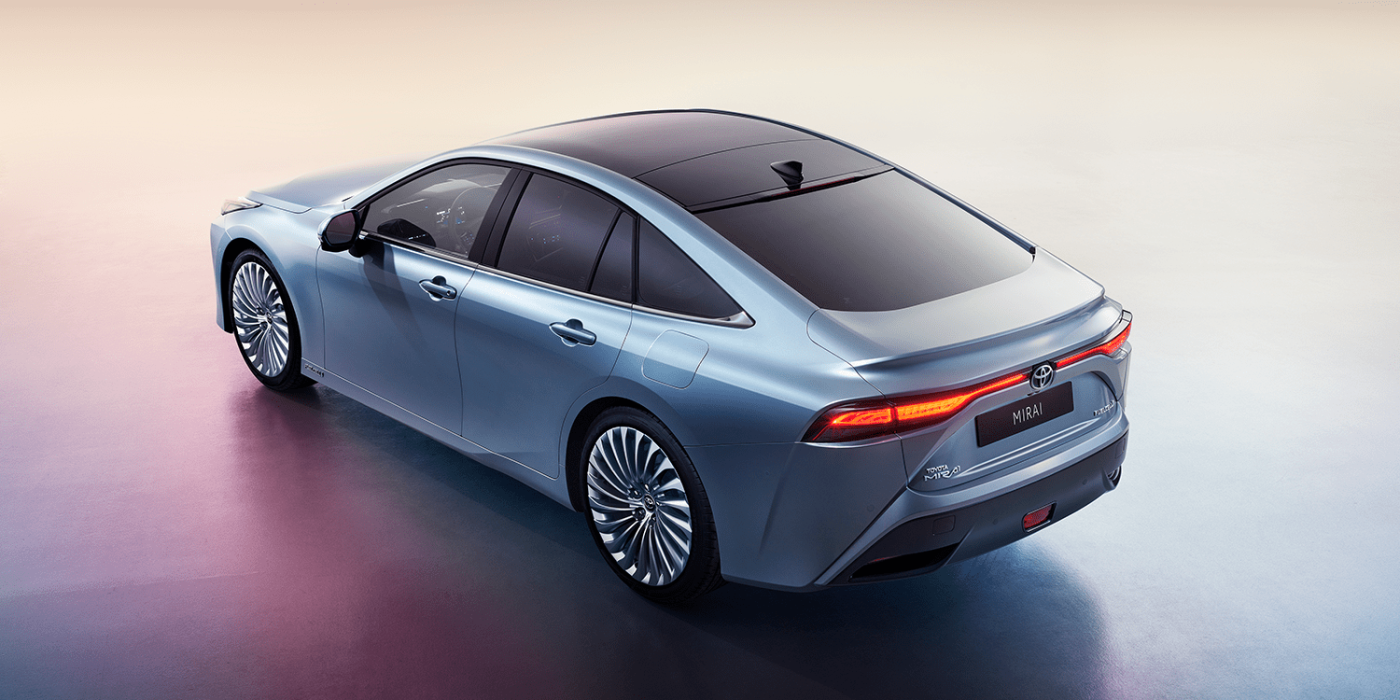
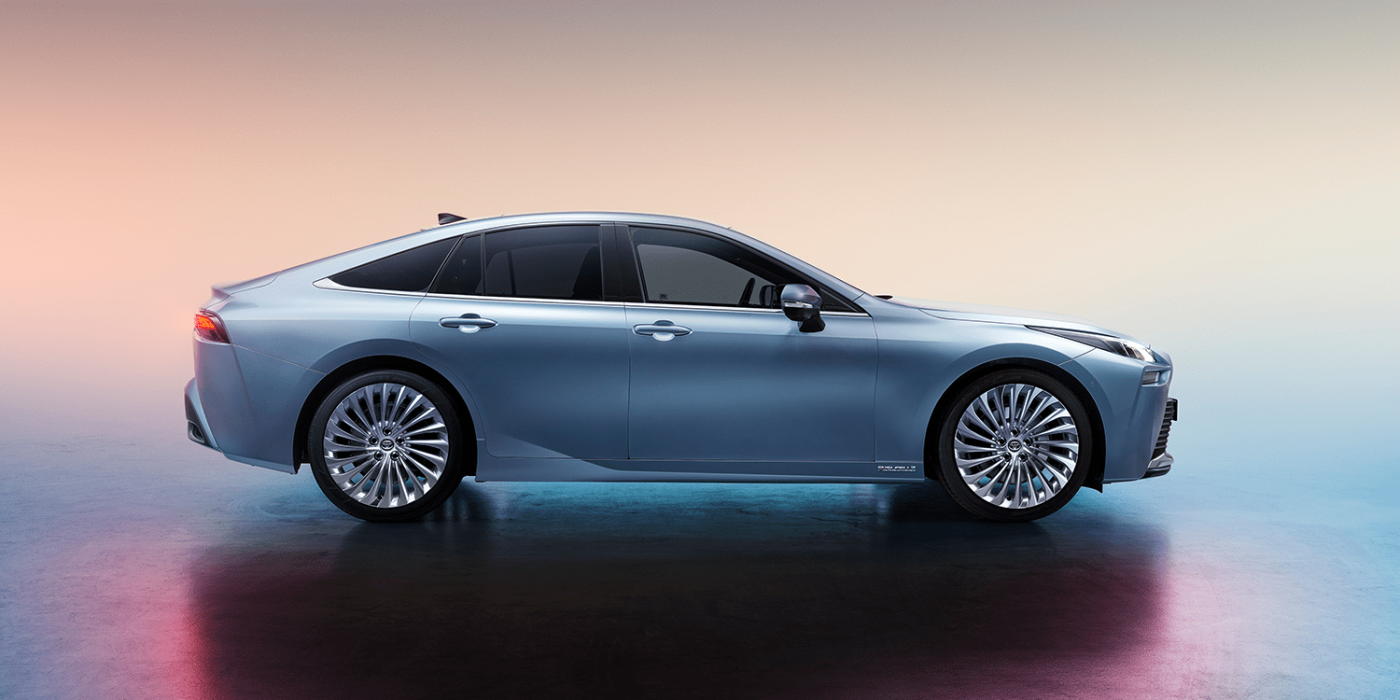
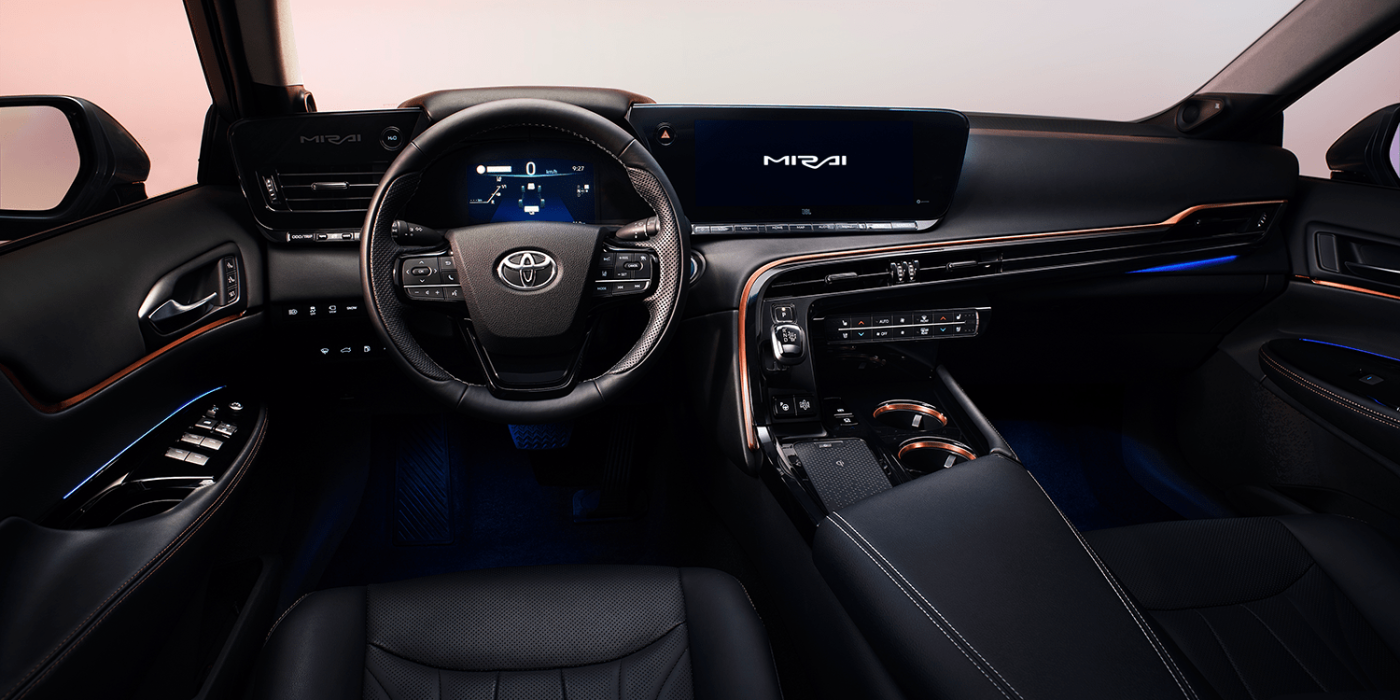
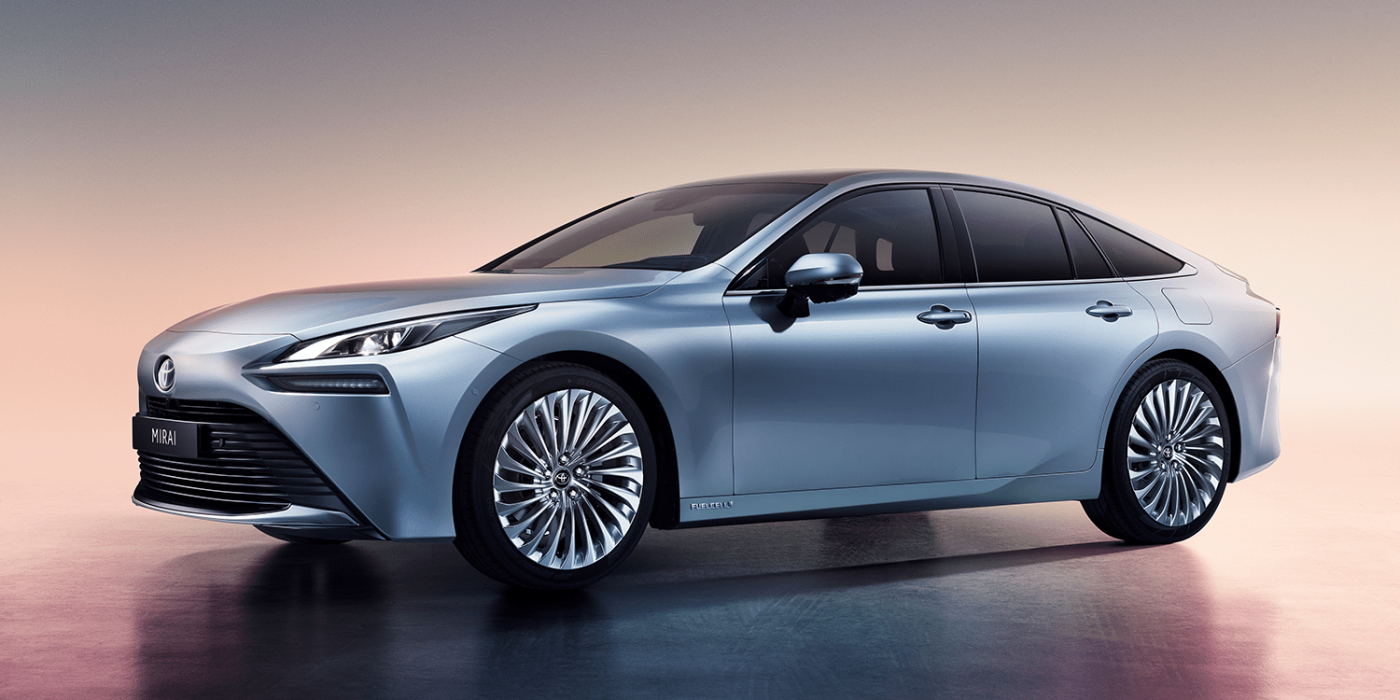
“We have pursued the goal of making a car that customers will feel they want to drive all time, a car that has an emotional and attractive design and the kind of dynamic and responsive performance that can bring a smile to the driver’s face,” says Yoshikazu Tanaka, chief engineer of the new Mirai. “I want customers to say ‘I chose the Mirai not just because it’s an FCEV, but because I simply wanted this car; it just happens to be an FCEV.”
Toyota is also launching a new brand for mobility services in Europe under the name Kinto. Among the first services to be launched under the brand in some European markets will be a car-sharing offer with hybrid vehicles called Kinto Share. Toyota’s existing car-sharing service Yuko is already operating in several European cities, including Dublin, Venice, Copenhagen and Madrid, and will be renamed Kinto.
“Kinto is part of our strategy to grow our total European business,” says Johan van Zyl, President and CEO of Toyota Motor Europe. “In markets where it can be viable and sustainable, adding mobility services to our traditional business model will allow us to respond to new customer needs and support cities and regions’ emerging mobility requirements.”
Toyota has been working on integrating new mobility services into its existing European business since 2018 and has founded two new business units for this purpose: Toyota Fleet Mobility is based in Cologne and specialising in full-service leasing, and Toyota Connected Europe is a company for digital platforms based in London.

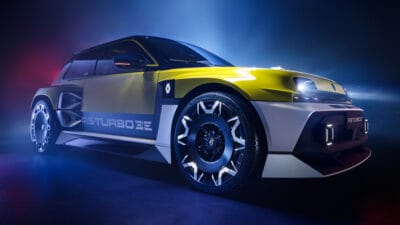
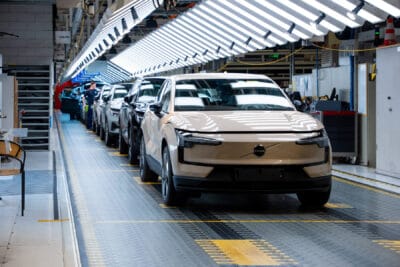
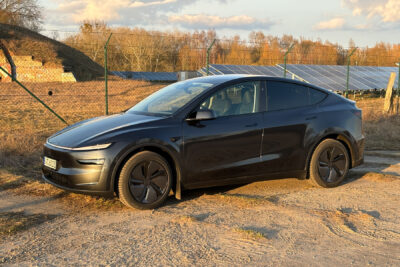
1 Comment